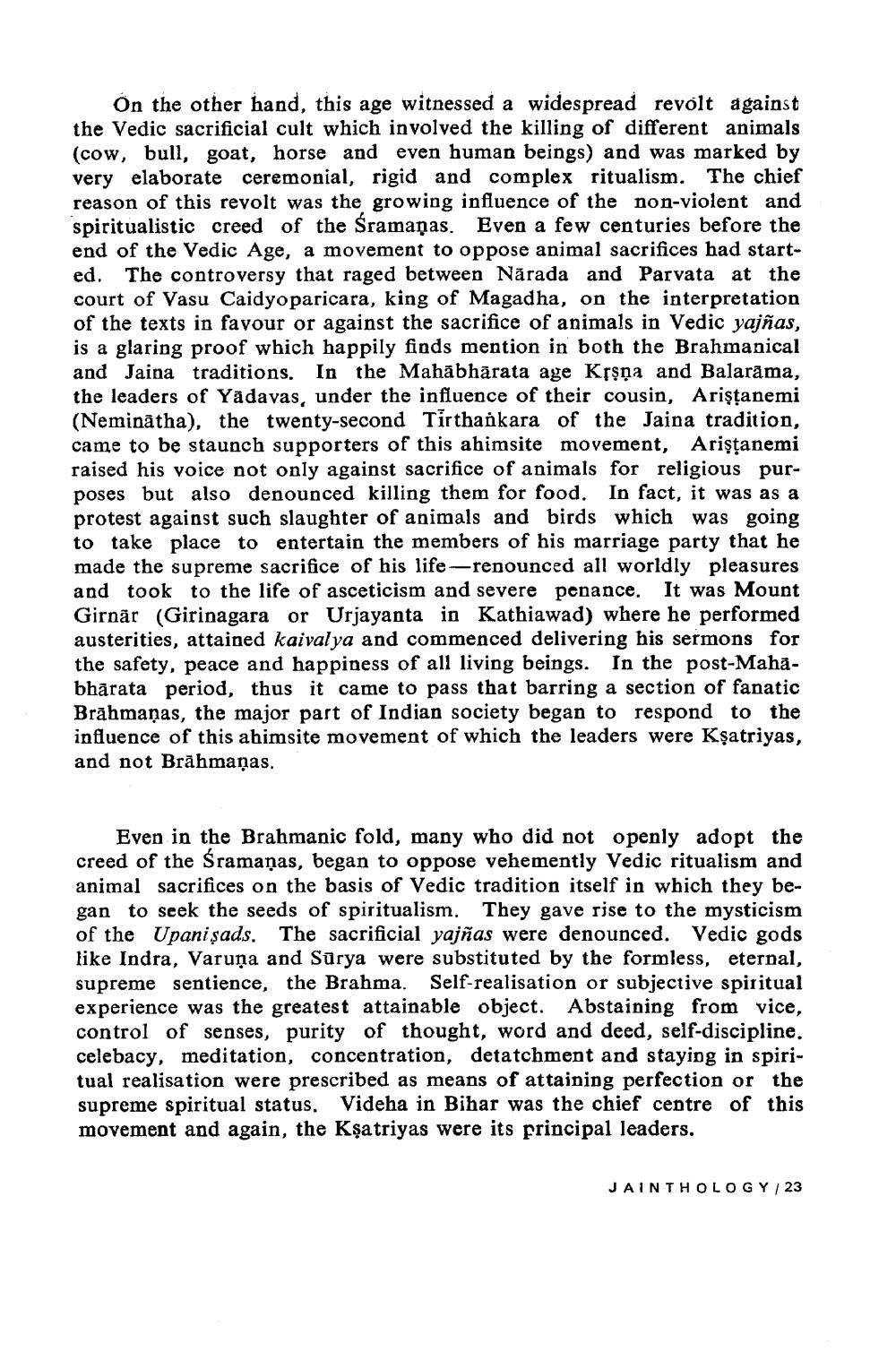________________
On the other hand, this age witnessed a widespread revolt against the Vedic sacrificial cult which involved the killing of different animals (cow, bull, goat, horse and even human beings) and was marked by very elaborate ceremonial, rigid and complex ritualism. The chief reason of this revolt was the growing influence of the non-violent and spiritualistic creed of the Sramaņas. Even a few centuries before the end of the Vedic Age, a movement to oppose animal sacrifices had started. The controversy that raged between Nārada and Parvata at the court of Vasu Caidyoparicara, king of Magadha, on the interpretation of the texts in favour or against the sacrifice of animals in Vedic yajñas, is a glaring proof which happily finds mention in both the Brahmanical and Jaina traditions. In the Mahābhārata age Krşņa and Balarāma, the leaders of Yadavas, under the influence of their cousin, Ariştanemi (Neminātha), the twenty-second Tirthankara of the Jaina tradition, came to be staunch supporters of this ahimsite movement, Aristanemi raised his voice not only against sacrifice of animals for religious purposes but also denounced killing them for food. In fact, it was as a protest against such slaughter of animals and birds which was going to take place to entertain the members of his marriage party that he made the supreme sacrifice of his life-renounced all worldly pleasures and took to the life of asceticism and severe penance. It was Mount Girnãr (Girinagara or Urjayanta in Kathiawad) where he performed austerities, attained kaivalya and commenced delivering his sermons for the safety, peace and happiness of all living beings. In the post-Mahabhārata period, thus it came to pass that barring a section of fanatic Brāhmaṇas, the major part of Indian society began to respond to the influence of this ahimsite movement of which the leaders were Kşatriyas, and not Brāhmaṇas.
Even in the Brahmanic fold, many who did not openly adopt the creed of the Sramaņas, began to oppose vehemently Vedic ritualism and animal sacrifices on the basis of Vedic tradition itself in which they began to seek the seeds of spiritualism. They gave rise to the mysticism of the Upani şads. The sacrificial yajñas were denounced. Vedic gods like Indra, Varuņa and Sūrya were substituted by the formless, eternal, supreme sentience, the Brahma. Self-realisation or subjective spiritual experience was the greatest attainable object. Abstaining from vice, control of senses, purity of thought, word and deed, self-discipline. celebacy, meditation, concentration, detatchment and staying in spiritual realisation were prescribed as means of attaining perfection or the supreme spiritual status. Videha in Bihar was the chief centre of this movement and again, the Kşatriyas were its principal leaders.
JAINTHOLOGY/ 23




